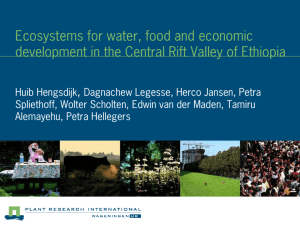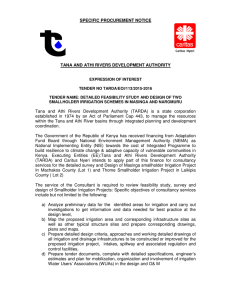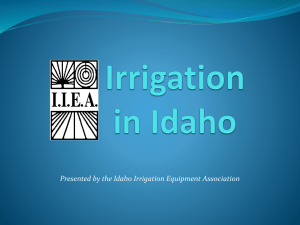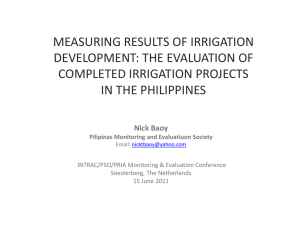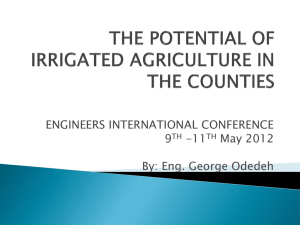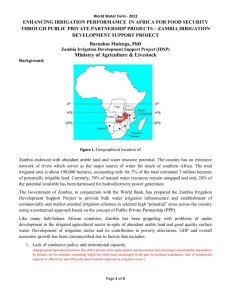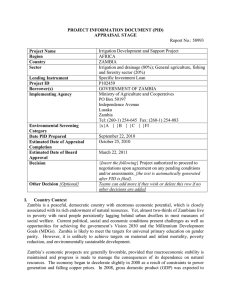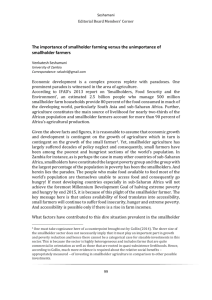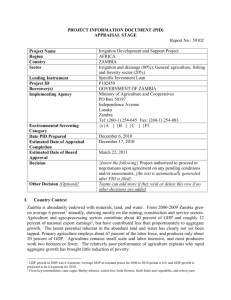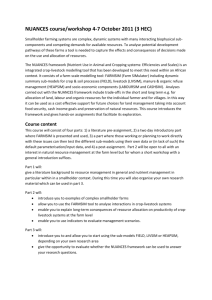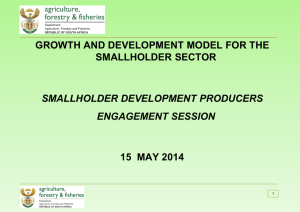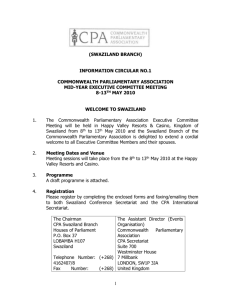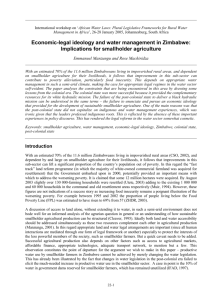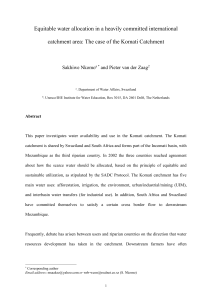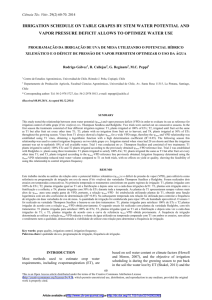The case of Lower Usuthu Smallholder Irrigation Project
advertisement
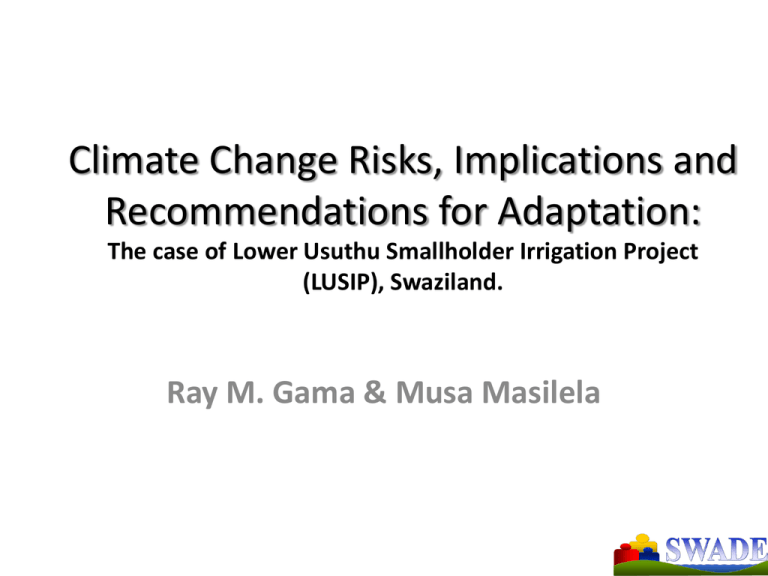
Climate Change Risks, Implications and Recommendations for Adaptation: The case of Lower Usuthu Smallholder Irrigation Project (LUSIP), Swaziland. Ray M. Gama & Musa Masilela LUSIP IN BRIEF • The Lower Usuthu Smallholder Irrigation Project (LUSIP) is a Government of Swaziland poverty alleviation initiative. • located in the Lower Usuthu river basin with a catchment area of 12, 559 km2. • The project will achieve this goal by transforming the local economy from rain-fed subsistence farming into sustainable commercial irrigated agriculture. • Main infrastructure – geared to harvest wet season flows to irrigate approx 11,500ha in (6,500ha-phase 1 and 5,000ha-phase 2). OBJECTIVES Swaziland is affected adversely by climate change already. However, it is not known by how much. This paper aims to: 1. collate available information on climate change impacts, with particular emphasis on LUSIP smallholder agriculture, and 2. Make recommendations for the project FINDINGS – relevant to LUSIP • There is consensus among climate scientists on the general outlines of climate change, however there is much less agreement on how climate change will affect a given location (e.g. LUSIP Smallholder Farming). • There will be a 4% decrease in annual runoff in the Usuthu River Basin (Matondo et. al., 2004). • Food production is expected to decrease as a consequence of the projected water shortages (Mabuza et. al., 2007). FINDINGS – relevant to LUSIP • On a dry-year condition the LUSIP reservoir will not fill up but a live storage level will be reached (Mhlanga, 2010). • There will be no serious challenges to meeting the gross demand for the project at current scenarios. FINDINGS – relevant to LUSIP Using the HaDCM3, model, both the 2050 A2 and B2 Potential Soil Moisture deficiency projections: Area around Siphofaneni and Big Bend (LUSIP development area) will lie in two regions projected to have soil moisture deficiency of 700 – 800mm and 800 – 900mm compared to the current 600 – 700 and 700 – 800mm, respectively. (Knox et. al., 2010). FINDINGS – relevant to LUSIP/ Projected impacts on Irrigation > LUSIP – popular crop at the moment is irrigated sugar cane. >To produce a unit weight of sucrose equivalent to current optimum levels of production, future irrigation needs were predicted to increase by 20–22% (Knox et. al., 2010). CONCLUSION AND RECOMMENDATIONS • Strict water management and sustainable land uses are important issues to be considered and factored into all planning and management regimes in the project area. e.g. A real time water management system • Development of a capacity building framework for local Farmers. • Use of water saving crops other than cropping the whole PDA with sugarcane. This also in line with the current LUSIP diversification strategy. CONCLUSION AND RECOMMENDATIONS • Irrigation water rationing - During dry season when there is zero diversion and reservoir levels are low, rationing of water can be an option until the following wet season when floods occurs. • The agro forestry initiatives proposed by some communities need to be upscaled. THANK YOU for listening


